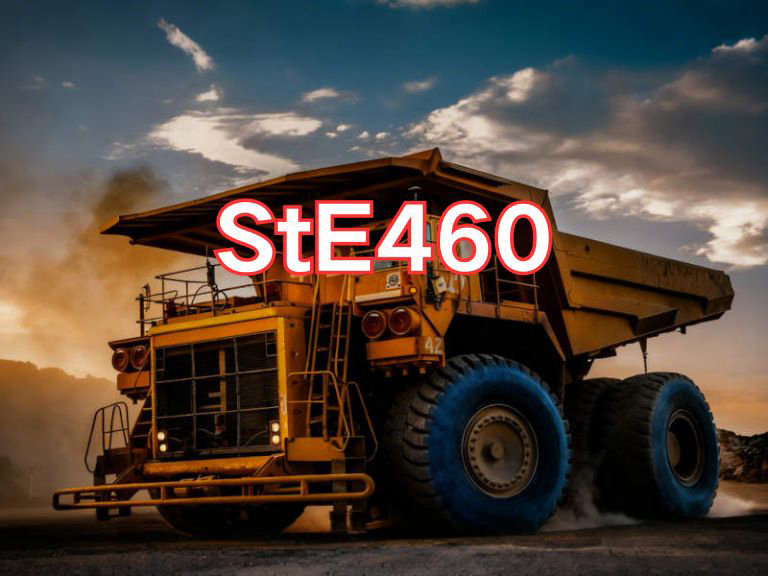

S355JR
S355JR is a widely used non-alloy structural steel, with its designation following the European standard EN 10025 naming system. In this system, "S" stands for "Structural steel," indicating that it is specifically designed for load-bearing structures; "355" refers to the minimum yield strength of 355 MPa at room temperature; "J" denotes that the steel must meet a specified minimum impact energy of 27 joules in Charpy V-notch testing at +20°C; and "R" indicates "As-rolled," meaning the steel is delivered in hot-rolled condition without additional heat treatment. Therefore, S355JR is a hot-rolled structural steel with verified toughness at +20°C, serving as the base grade within the S355 series and one of the most commonly used structural steels.
The main characteristics of S355JR steel plate lie in its balanced combination of mechanical properties and weldability. Its tensile strength typically ranges from 470 to 630 MPa, offering high strength along with good ductility. The steel has a low carbon equivalent, which allows for welding with little or no preheating required, making it compatible with various welding methods such as manual metal arc welding (MMA) and gas metal arc welding (GMAW). Welded joints are generally stable and reliable. Additionally, S355JR exhibits good cold-forming capabilities, enabling bending, stamping, and other fabrication processes, making it suitable for manufacturing complex structural components. While its toughness requirements are moderate (tested only at +20°C), it provides sufficient safety margin for most engineering applications under normal climatic conditions.
S355JR is extensively used in building structures, bridges, industrial workshops, transmission towers, construction machinery, commercial vehicles, pressure vessels, and general-purpose steel structures. Due to its stable performance, cost-effectiveness, and ease of processing, it is one of the most widely adopted structural steels in Europe and global markets, particularly suitable for projects requiring good weldability and strength but not exposed to extreme low-temperature environments.
The current standard for S355JR steel plate is EN 10025-2:2019, titled Hot Rolled Products of Structural Steels – Part 2: Technical Delivery Conditions for Non-Alloy Structural Steels. Published in 2019, this version supersedes the previous EN 10025-2:2004 and represents the latest international specification. It specifies detailed requirements for chemical composition, mechanical properties, impact testing, dimensional tolerances, and inspection procedures. As a fundamental grade in the European structural steel system, S355JR holds an irreplaceable position in construction, manufacturing, and infrastructure development, and remains a go-to material in modern structural design.

Ultrasonic Testing (UT)
A key non-destructive testing technique that uses high-frequency sound waves to detect internal flaws in steel plates. The probe emits sound waves, which reflect when encountering defects such as cracks or inclusions. The receiver captures the echoes, enabling precise determination of defect location and size. With high sensitivity, strong penetration, and fast inspection speed, UT effectively ensures internal quality, widely used in the production of heavy plates, pressure vessel plates, and other high-end products to guarantee safety and reliability.

Magnetic Particle Testing (MT)
A common surface inspection method that magnetizes the workpiece, causing leakage magnetic fields at surface or near-surface defects like cracks or inclusions, which attract magnetic particles to form visible indications. Simple to operate and highly sensitive, MT is suitable for rapid inspection of surface and near-surface flaws in ferromagnetic materials, widely used for online or offline inspection of plate edges, ends, and welds, ensuring product quality and safety.

Penetrant Testing (PT)
A non-destructive method for detecting surface-breaking flaws. A penetrant liquid is applied to the cleaned steel surface, allowing it to seep into defects such as cracks or pores. After removing excess penetrant, a developer is applied, causing the trapped penetrant to bleed out and form visible indications. Simple and cost-effective, PT is suitable for inspecting surface defects in various non-porous materials, commonly used for welds, castings, and complex components, effectively ensuring surface quality of steel plates.











